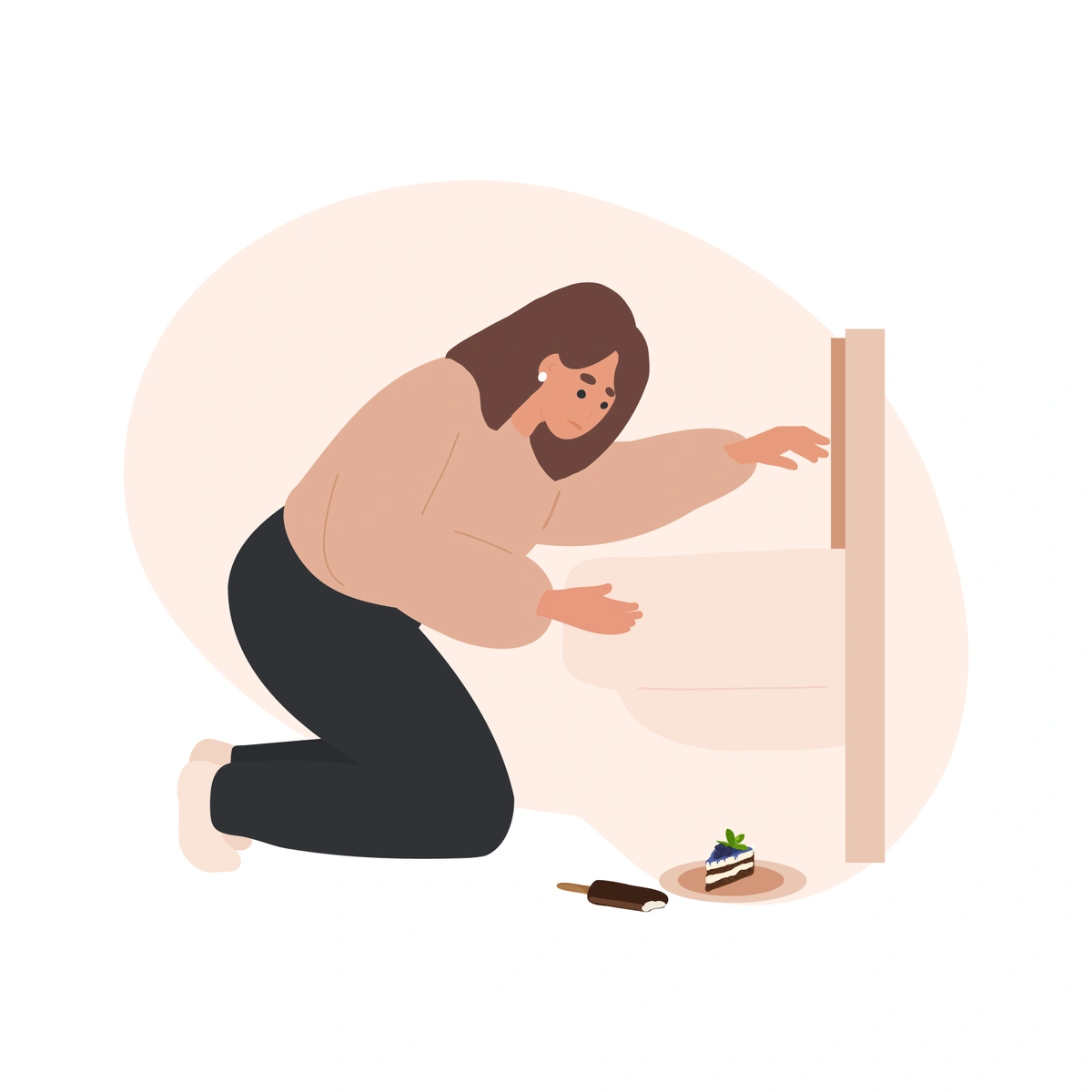Bulimia Nervosa

Bulimia Nervosa
Bulimia Nervosa (BN) is a disorder which can cause many serious medical problems, up to and including death. Bulimia Nervosa is characterized by binging followed by compensatory behaviors including self-induced vomiting (purging), fasting/restricting, excessive exercise, dieting/diet pills, and/or the use of diuretics or laxatives.
What it looks like
- A feeling of being out of control during the binge eating episodes
- Self-esteem is overly related to body image
- Bingeing followed by purging occurring 1x/week
- Mild to extreme: 1-3x/week to 14x/week
Individuals with Bulimia Nervosa may experience unusual swelling of the cheeks or jaw area, calluses on the back of hands/knuckles, and/or discoloration or staining of teeth due to excessive vomiting. Creation of lifestyle, such as schedules and rituals to make time for binge/purge sessions are common in individuals who struggle with Bulimia Nervosa. Withdrawal from one's usual friends and activities occur along with attitudes indicating that weight loss, dieting, and control of food are primary concerns.
Individuals with BN often have co-occurring substance use disorders along with other compulsive/impulsive disorders. They also may struggle with depression, anxiety, and ADHD. In addition, many individuals with all types of eating disorders have experienced a form of trauma in their lives.
Who can develop an eating disorder?
A common myth is that eating disorders most affect young Caucasian girls. However, eating disorders do not discriminate among socioeconomic status, race, religion, age or even gender. An individual with an eating disorder could be one's next-door neighbor, co-worker, or even one's child. In addition, an elementary school student, adolescent, teen, young adult, middle-aged adult—or perhaps an aging parent.
- 0.3% of the US population will struggle with bulimia in their lifetime
- 78% of those with bulimia nervosa experience daily life impairment and 43.9% experience severe impairment
- Males represent 25% of individuals with AN and BN
- Over 50% of LGBTQ individuals struggle with eating disorders
- A history of more than one Adverse Childhood Experience (ACE), is associated with a higher risk for eating disorders, substance use disorders, and depression and significantly affect African Americans American Indian/Alaska Native and Hispanic individuals.
What causes eating disorders?
Eating disorders can be linked to the cultural environment, genetics, and/or triggers. The cultural environment includes social media, diet trends promoted as “healthy,” and society’s focus on physical appearance vs. inner worth. Family environment can also contribute to eating disorders including high expectations, perfection, lack of structure in the family, or split family. Possible genetic components of eating disorders include biologic and innate brain chemistry, along with family history of depression, anxiety, eating disorders and/or substance abuse.
Some researchers have found that adults who are members of sexual minorities, particularly those who are bisexual, gay and transgender, have a higher risk for eating disorders than heterosexuals. This greater risk may occur because individuals in these groups may experience high levels of discrimination and disapproval from others. They may also be more critical of their own bodies. In some cases, a higher body mass index (BMI) may cause LGBQT individuals to engage in unsuccessful diets, which may then lead to the development of BN.
Medical complications
Eating disorders have the highest mortality rate of any mental illness and can affect every cell, tissue, and organ in the body. Eating disorders can result in cardiac arrest, diabetes, chronic renal failure, and neurological damage, along with bowel, breast and reproductive cancers. Long term use of laxatives may result in dependency, as the bowel will no longer be able to function as it should. Tooth erosion and gastrointestinal reflux are also complications of vomiting. A total of 3.9% of those with bulimia nervosa will die from their disorder due to medical complications associated with the disorder itself or from suicide.
Having an eating disorder is no one's fault
Just like having blue eyes or brown hair, dimples or no dimples, people have no control over whether or not they develop an eating disorder. Some people believe that people who have an eating disorder are simply “choosing to not eat,” however, the problem is far more complicated. People with eating disorders may consciously know that their behavior could hurt them, but knowing is only half the battle. Furthermore, eating disorders can sometimes stem from traumatic events, which can lead to the development of disordered behavior as a coping mechanism.
Outlook
While living with Bulimia Nervosa can present unique obstacles and finding the best treatment can take many attempts. Early intervention, along with the proper treatment can dramatically improve one’s quality of life. Treatment for BN often involves a team of professionals working to improve the patient’s relationship with food while simultaneously encouraging them to return to a healthy weight. If medical treatment isn’t contacted soon enough, a person may need immediate intervention to reverse the effects of severe malnutrition. Although living with recurrent Bulimia Nervosa can present unique obstacles and finding the best treatment can take many attempts, with consistent effort and diligence, it is possible for someone who suffered from BN to live a perfectly healthy, normal life.